On picking up Gerald Scarfe’s new autobiography, I was surprised to find Derry mentioned in the blurb, albeit in the context of an IRA carjacking he suffered there in the 1970s. “I hope it didn’t put you off the place,” I say, rather pathetically, as if I’m about to unload a list of brunch recommendations for my home town.
“No,” he laughs, “your lot treated me okay. There was a young guy,” he remembers of the incident, way back in pre-brunch 1971, “he was nice to me. He rapped on the window and said ‘we might need your car’, and I didn’t understand what he meant. I went into this long-winded explanation about how I’d hired it so I’d end up paying for it, because they wouldn’t give me insurance, and he went away! And then the harder guys came over and got in.”
Alarmed and out of place in the Rossville flats area of the city, he wasn’t too keen on resisting. “If someone sticks a gun in you, do whatever they say. If the guy is prepared to go that far, how much further is he prepared to go?”
As occupational hazards go, armed robbery might seem atypical for a cartoonist but, then, Scarfe is hardly a typical cartoonist. For six decades he’s been the pre-eminent satirical artist of his age, his grotesque and barbed political caricatures instantly recognisable from the pages of Punch, Private Eye and the Times newspaper. He’s also produced a body of work beyond politics that’s spawned operas, films and the imagery behind Disney’s Hercules, where he served as the only outside artistic director for the world’s most iconic animation studio.
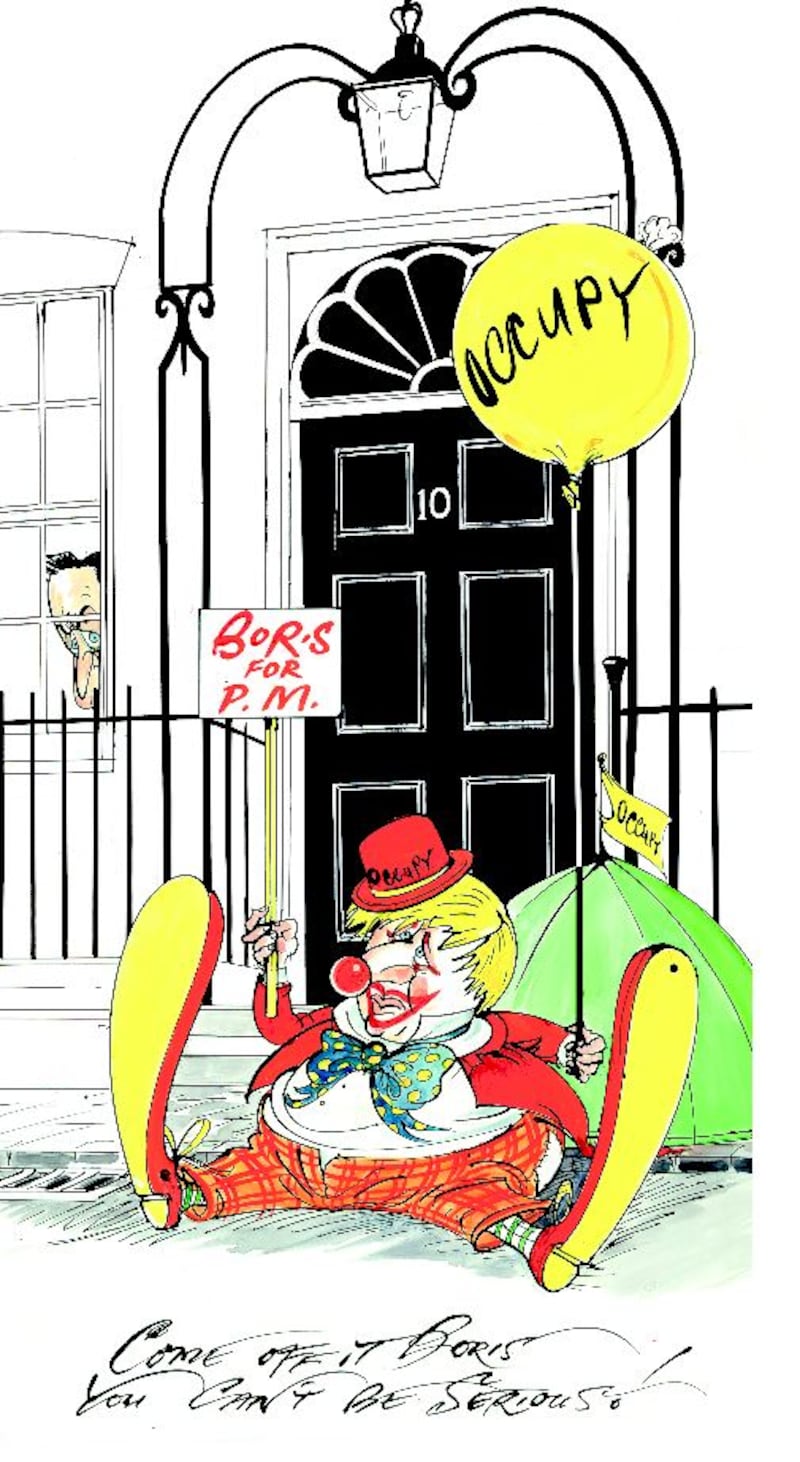
More long-standing than that again, however, is the resonance from his art direction of Pink Floyd’s The Wall. “I still get mail about Pink Floyd every week,” he says. “One guy wanted my signature tattooed on his arm.” As if to prove the breadth of his appeal, this interview is, Scarfe says, sandwiched in between a few unlikely publications in the next few days. “You’re between Heavy Metal magazine and Saga. And I have to do Italian Vogue at some point too.”
‘Visual reporter’
And before all that, came his less heralded time in war zones, disaster areas, and sites of civil unrest, which he documented as an unlikely cartoon correspondent – “visual reporter” was the preferred term, he says – in Vietnam, Calcutta and even Derry’s Rossville flats.
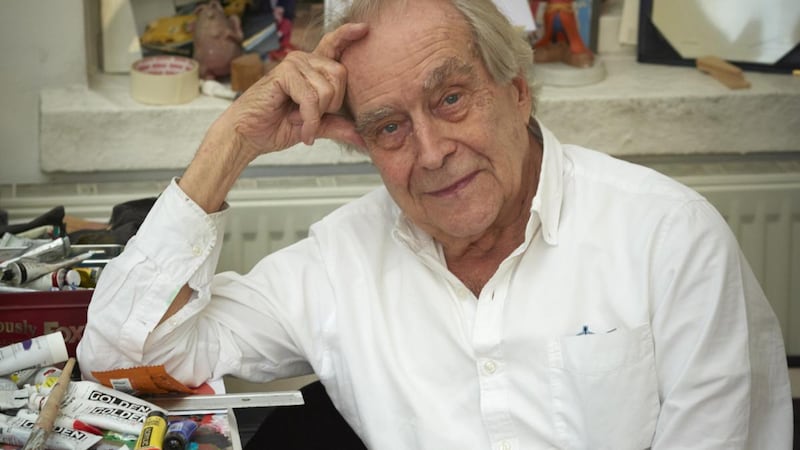
“I was sent as a visual reporter to make drawings, and in Derry I was with a journalist who was interviewing members of the IRA. I remember sitting in bars in Derry and talking to people. I was very sympathetic to them, to be honest, I always wondered what the hell we were doing there.”
He affects a disarmingly accurate Derry brogue as he impersonates his gun-toting captor, who spotted his sketch pad, and intoned with an admiring glance, “You’re a brave drawer.” After this, he was promptly allowed to exit the vehicle, and politely prompted to remove anything he needed from the boot before they took off. In his book, Scarfe cites his belief that the very same car was used to blow up a post office the next day.
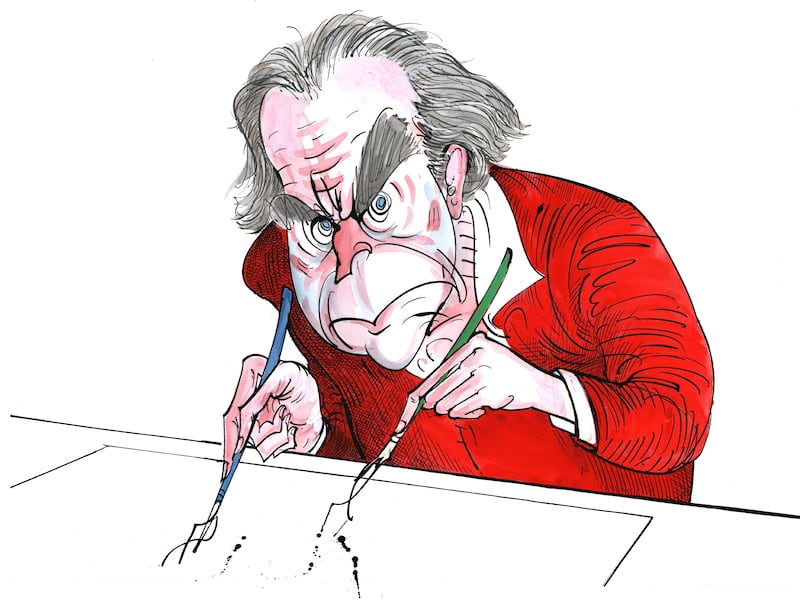
A Long Drawn Out Trip is full of such stories, told by a man who’s spent six decades chronicling the world with all the grotesquery and gallows humour it probably deserves. He traces the beginnings of this career back to childhood illness, which left him bed-ridden and isolated for weeks on end.
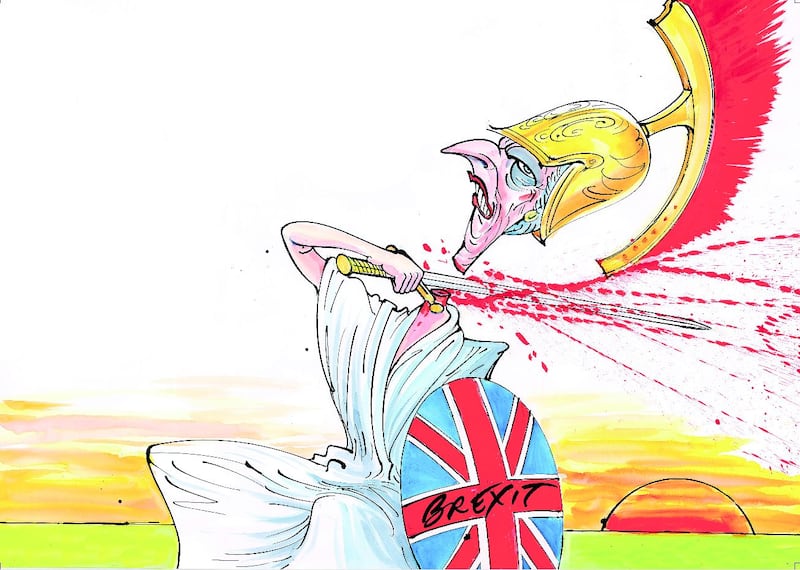
“The whole premise of this book was,” he says, “‘How did you become this strange person?’, which I first try to answer by saying I had asthma, which was pretty severe and separated me from my peers.”
‘Therapeutic release’
Aside from the painful affects of his condition, it also isolated him from friends. “I was very boring to them. What child wants to come to your bedroom to play Lego, or whatever? So I was drawing all the way through childhood, and that became my way of explaining the world. It still is. I get a tremendous therapeutic release when I’m drawing. If something’s bugging me, usually I can go to the drawing board and it’s another world, another thought line to get away from.
“On the other hand,” he says, sounding a note of caution to that overly neat explanation, “there are other people with asthma, and they aren’t all vicious artists, so who knows?”
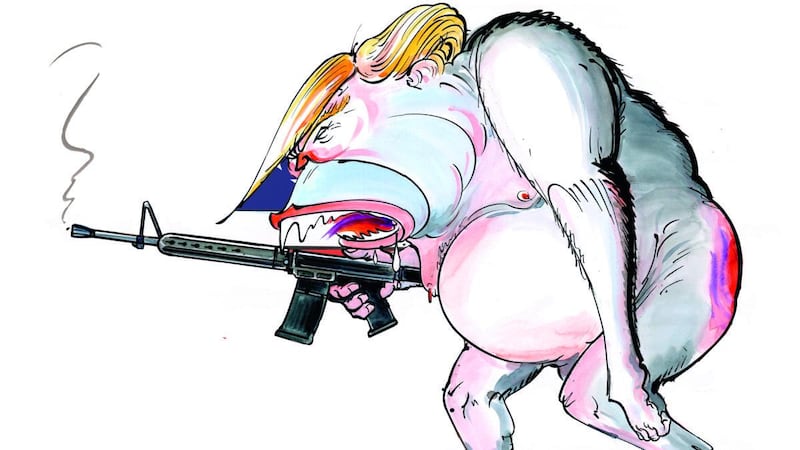
That “vicious” reputation is built on the back of his seminal work in the 1979s and 1980s, most especially his nightmarish iterations of Margaret Thatcher as an axe-headed bat, a tank and any number of other ghoulish forms. If “Gerald Scarfe the artist” is a psychotic herald of blood, horror and gore, that persona is completely at odds with the laid-back and avuncular Gerald Scarfe before me in his studio.
He is now 83, and it would be convenient to say that age has mellowed him, but prior profiles and interviews paint a picture of someone who’s always been thoughtful, even-tempered, and readily contrastable with the caustic, splattered mania of his drawings. I’m thrilled to see that dozens of these huge drawings surround him even now, comically out of scale, like giant airport chocolate bars, or novelty cheques handed to bank managers during Comic Relief. “Most people imagine they’re the size they see in the paper,” he says, “but mine aren’t – I’ve got delusions of grandeur.”
His first modicum of success came when he won a drawing competition in Eagle Comics. The image and its announcement are included in the book, and feature a surprise cameo from “David Hockney (Bradford)”, who came highly commended in the same contest. “He was the one who told me about it, although,” he says, with a wry laugh, “when he reports it, David says he got second prize, which is a bit of an upgrade.”
‘Senile wreck’
By his mid-20s, Scarfe was already on track to be an illustrator of some renown, and his sketch of Winston Churchill’s final sitting in parliament was on the front cover of Private Eye when the statesman died, having been originally banned by the Times for fear it would upset Churchill’s wife.
“He was gaga there,” Scarfe tells me. “The explanation given was that his wife, Clemmie, would be upset when she saw in the paper the next morning. By the standards of today, it wasn’t a particularly hard image, it just shows him as an old man. We, as the British public, had only been allowed to see this iconic figure of the bulldog on the cliffs of Dover, with a cigar, defying the hun. They didn’t want to see this senile wreck.”
Are reactions like this still common?
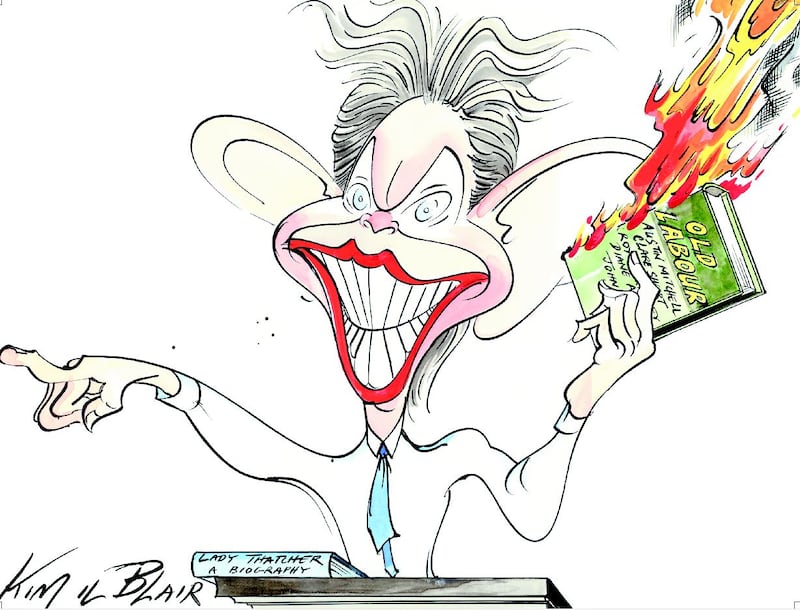
“Well,” he sighs, “You’d think politicians would react badly but, unfortunately, it’s often grist to their mill. I was thinking today, when Boris Johnson drew a parallel between him and the Incredible Hulk, he knew cartoonists were going to draw him as the Hulk. He’s setting his own agenda, it keeps your profile high, keeps you out there. And the terrible thing, as a cartoonist, is that you’re giving them publicity all the time. It’s hard to make it harsh enough to make them wish you hadn’t done it.”
I mention Spitting Image puppets, which famously became a badge of honour for any politician featured, rather than a plight they feared or regretted.
“I remember they had Kenneth Baker as a slimy slug,” Scarfe says, “and whenever he was interviewed about it he’d say: ‘ha ha yes, I believe I’m a snail’. No you’re not, Kenneth, you’re a slug. People don’t mind snails too much, but they don’t like slugs.”
Is, then, the quest for a cartoonist to find the slug?
“To destroy a politician is very difficult, and a lot of people kid themselves that that’s what they’re doing. Having said that, humour can be a great weapon for defusing the pomp of these arseholes, getting through to them, and that’s what’s hard, that’s what we’re really trying to do; to prick their balloon. You want to get them. You want to get them where it hurts.”
A Long Drawn Out Trip: A Memoir by Gerald Scarfe is published by Little, Brown



















